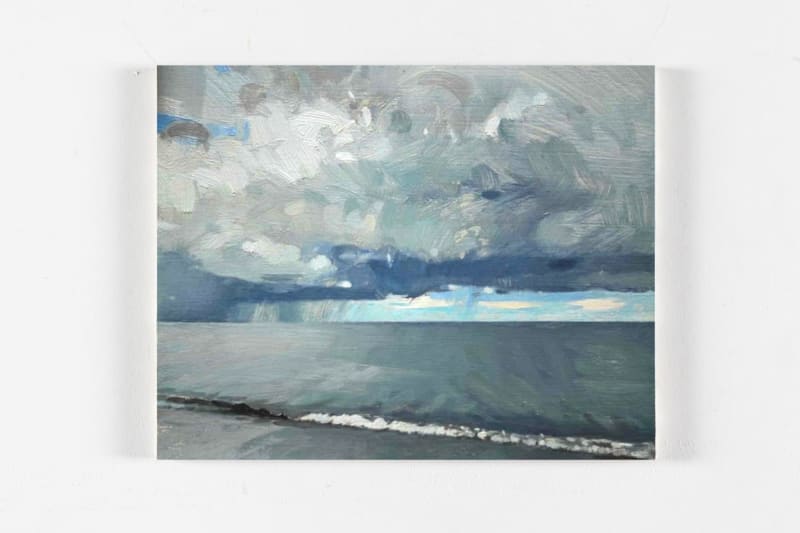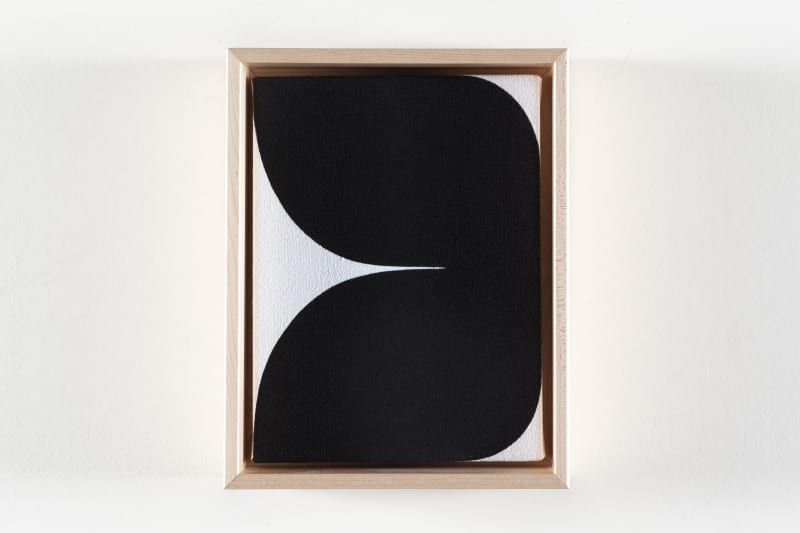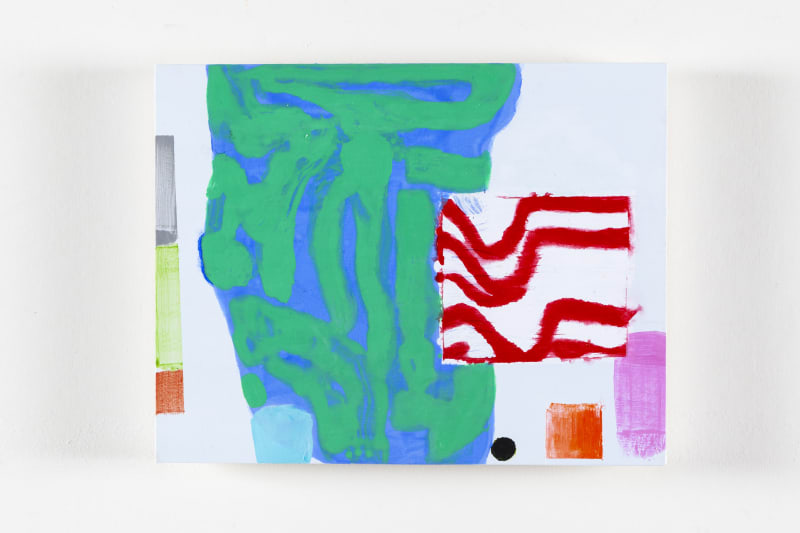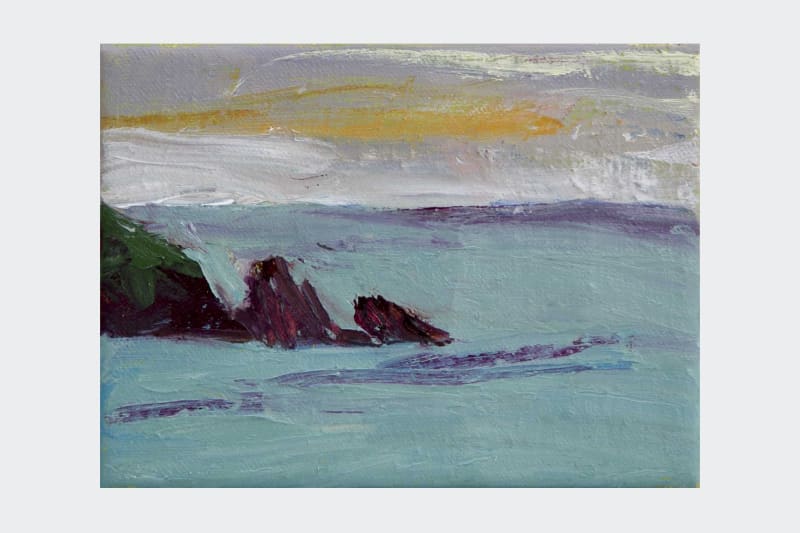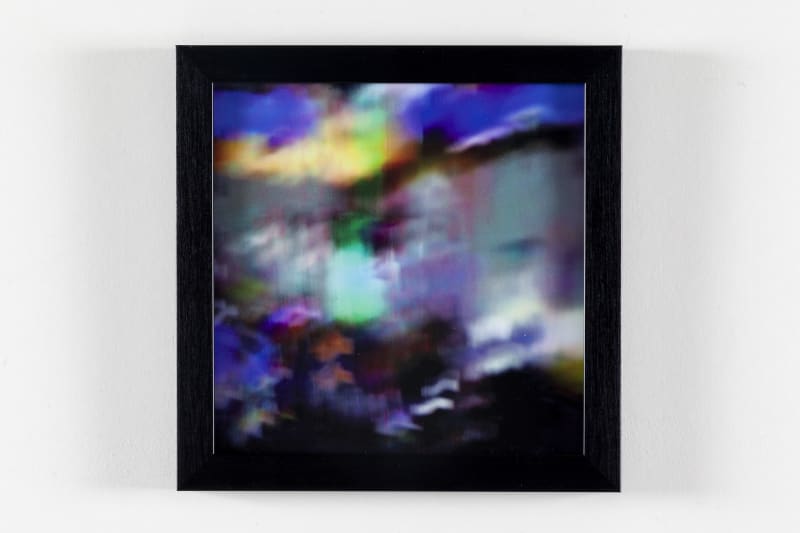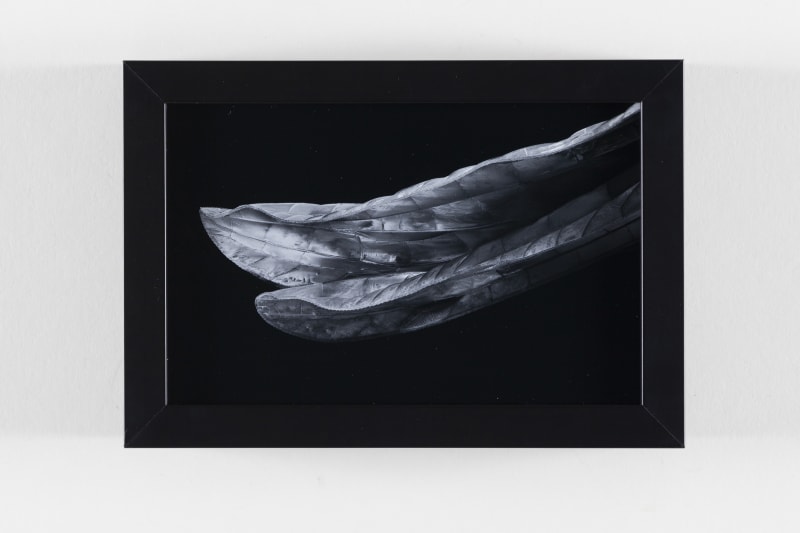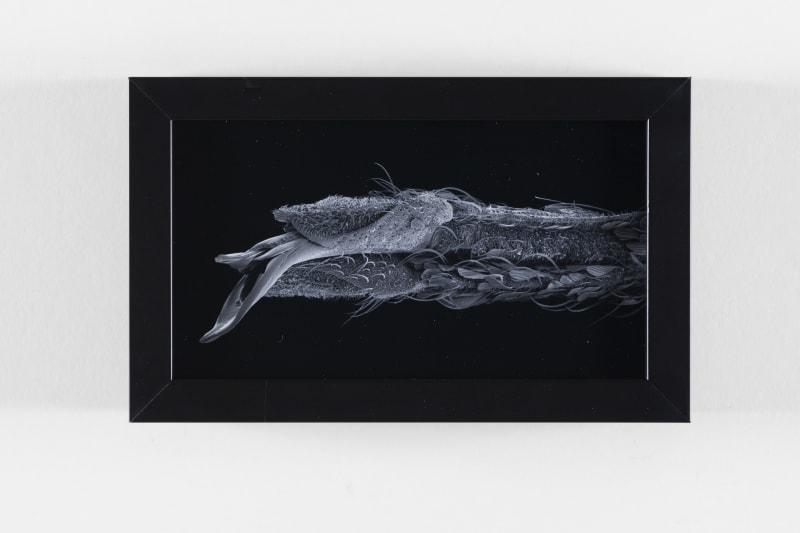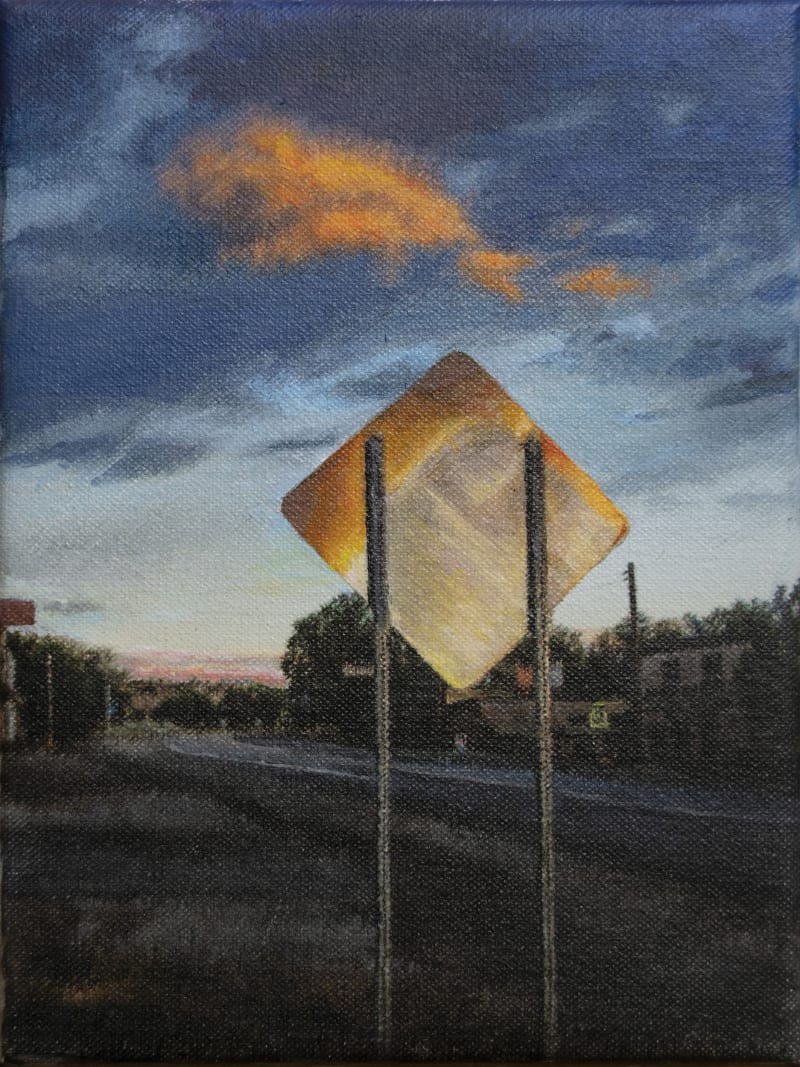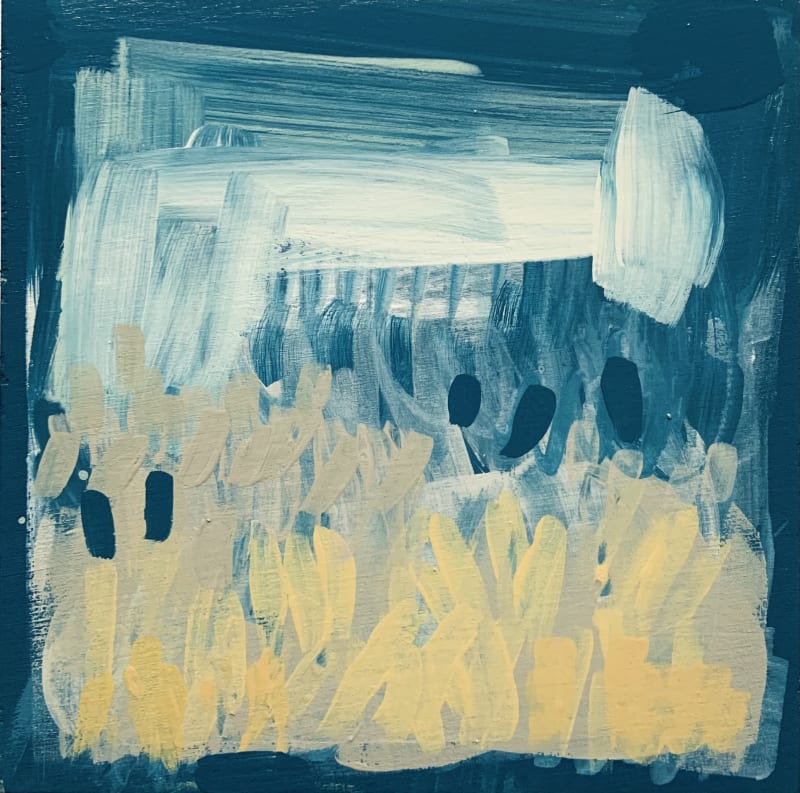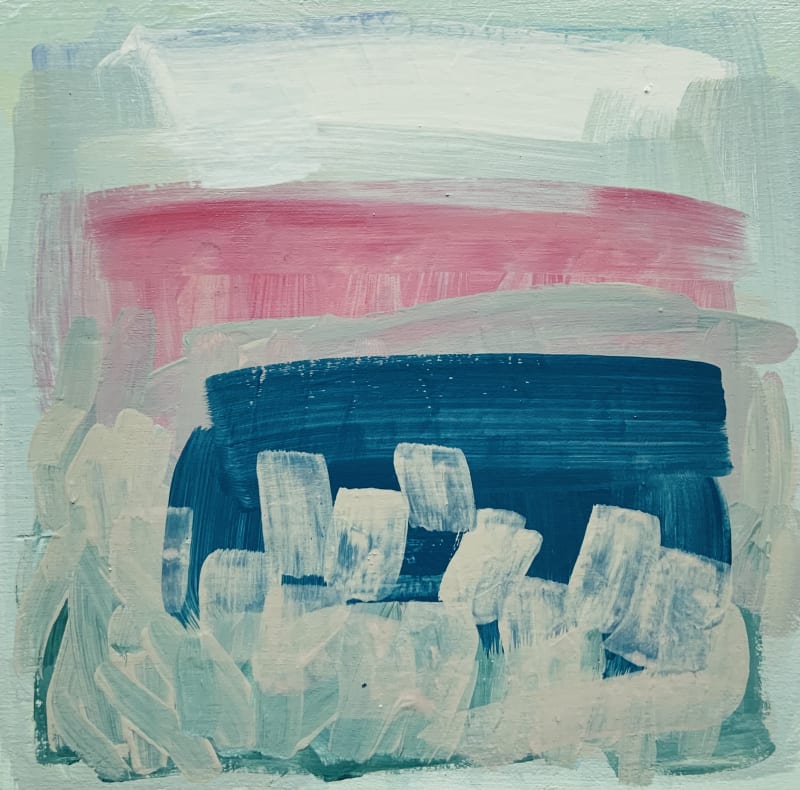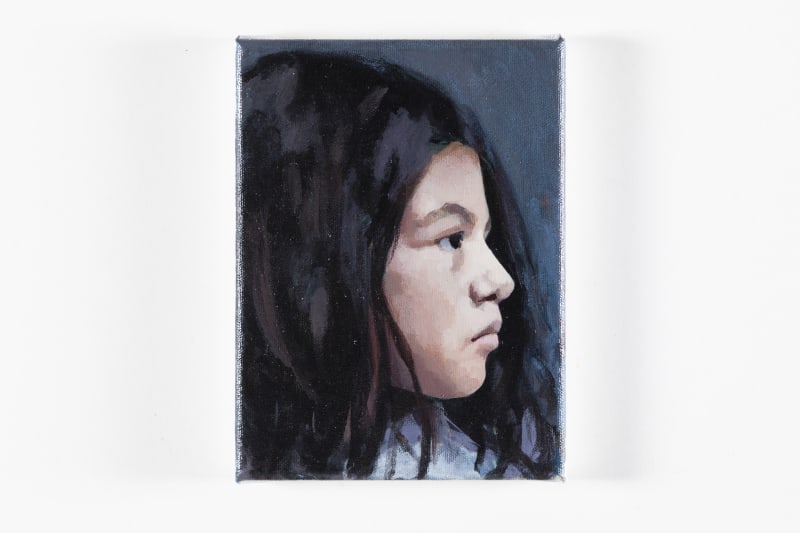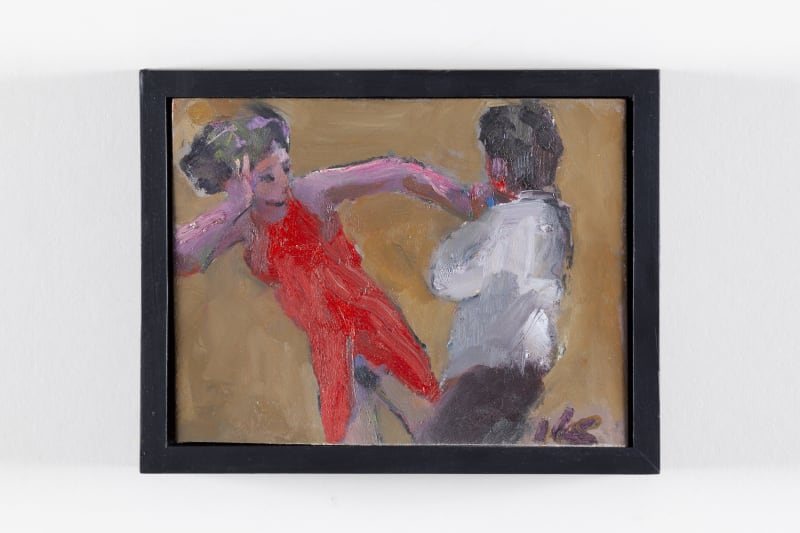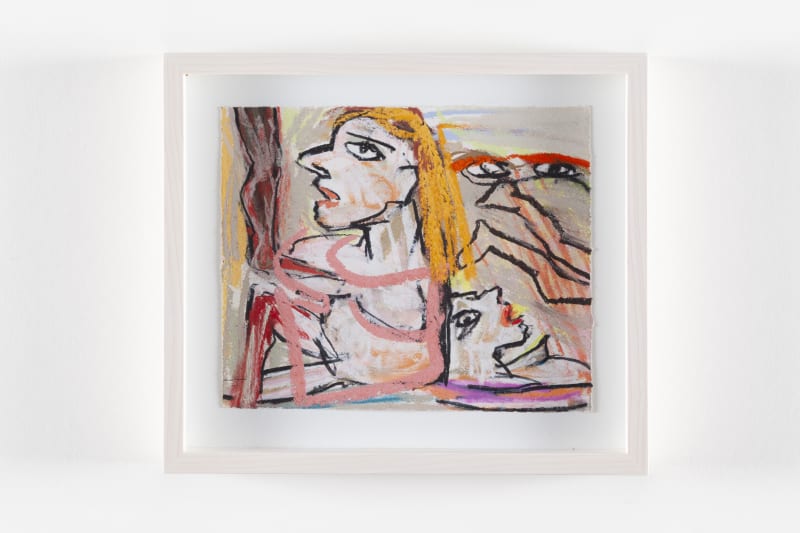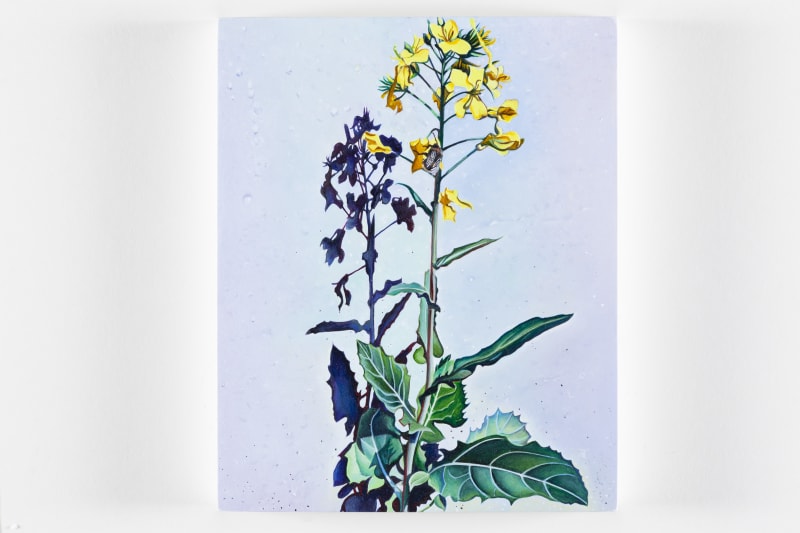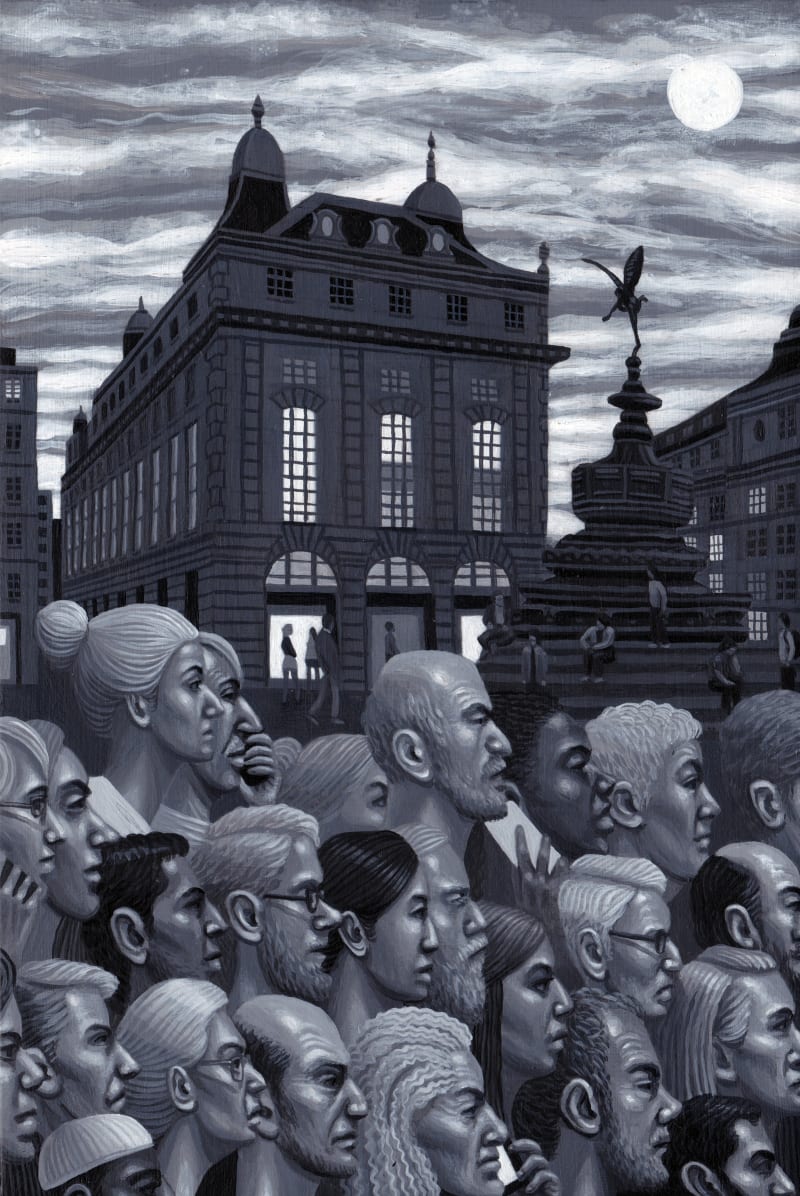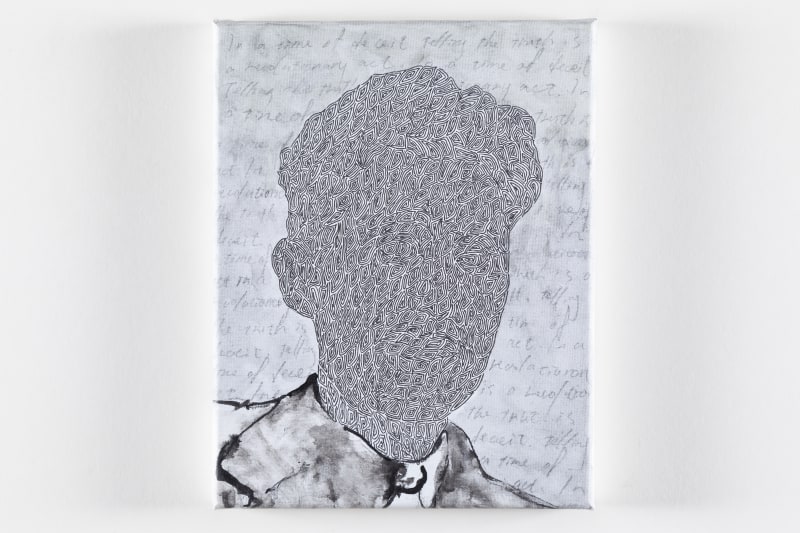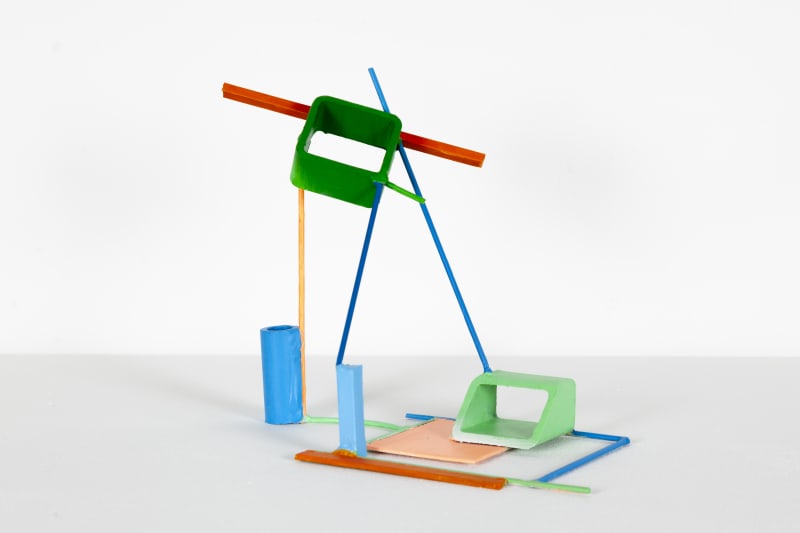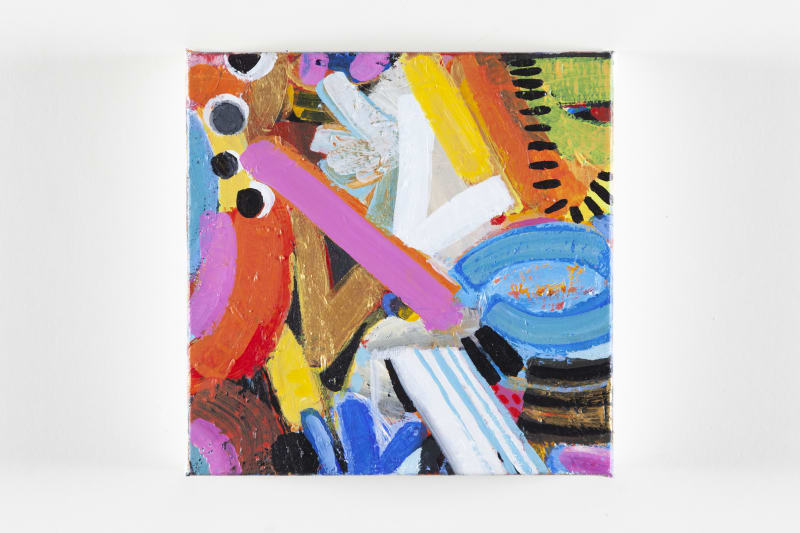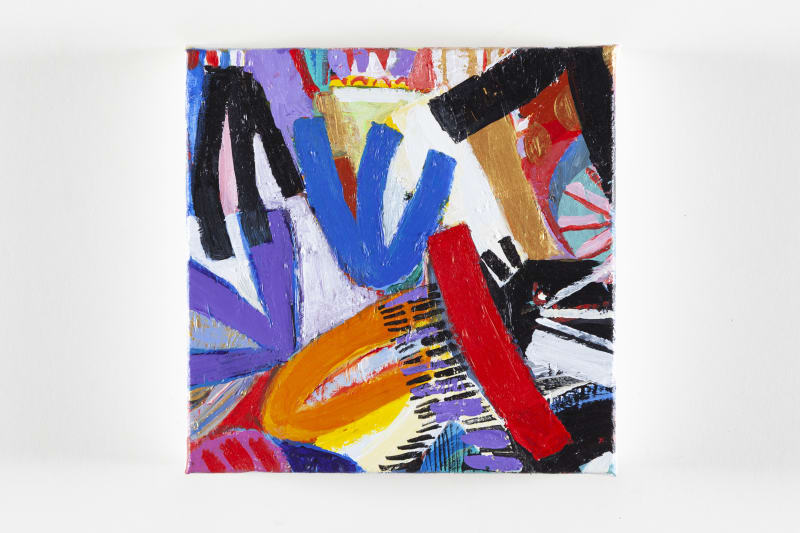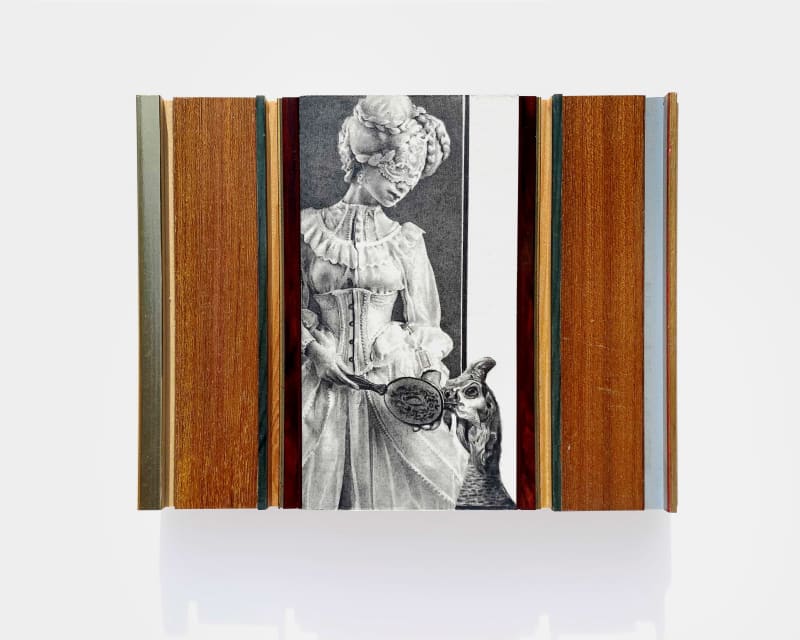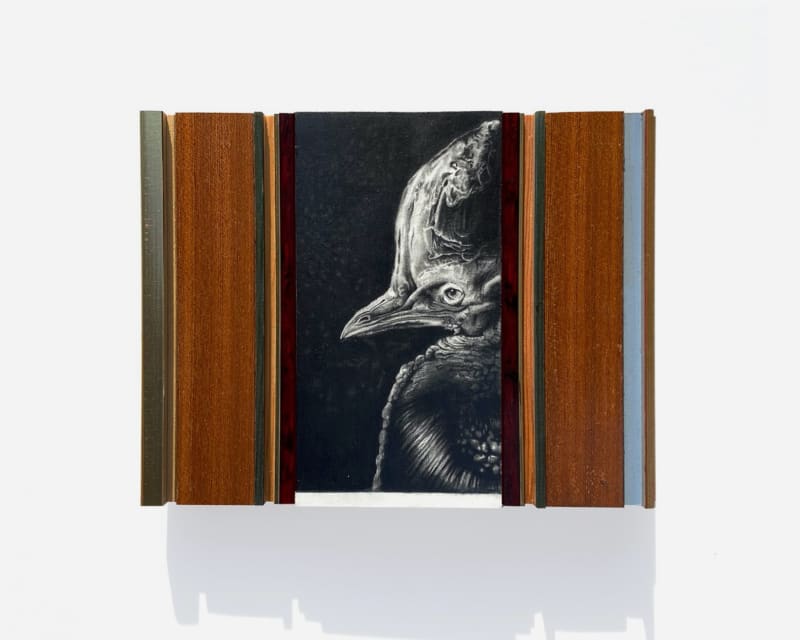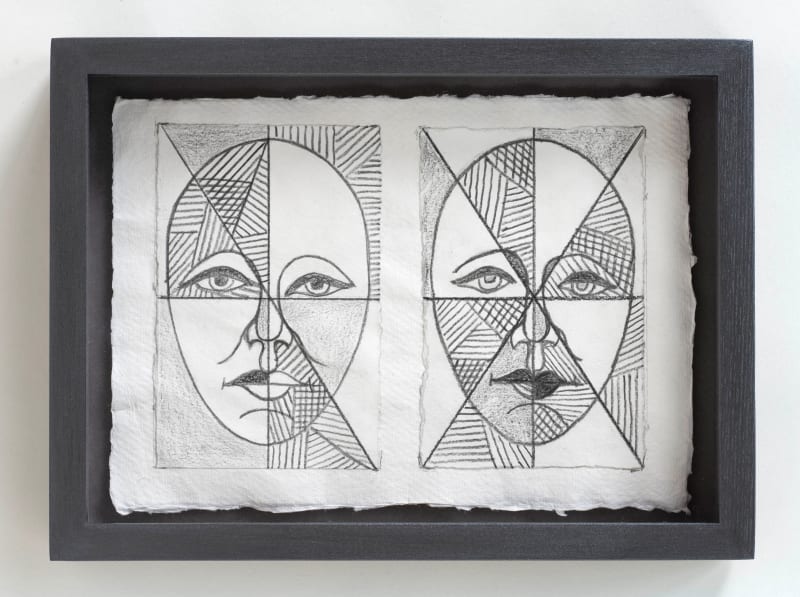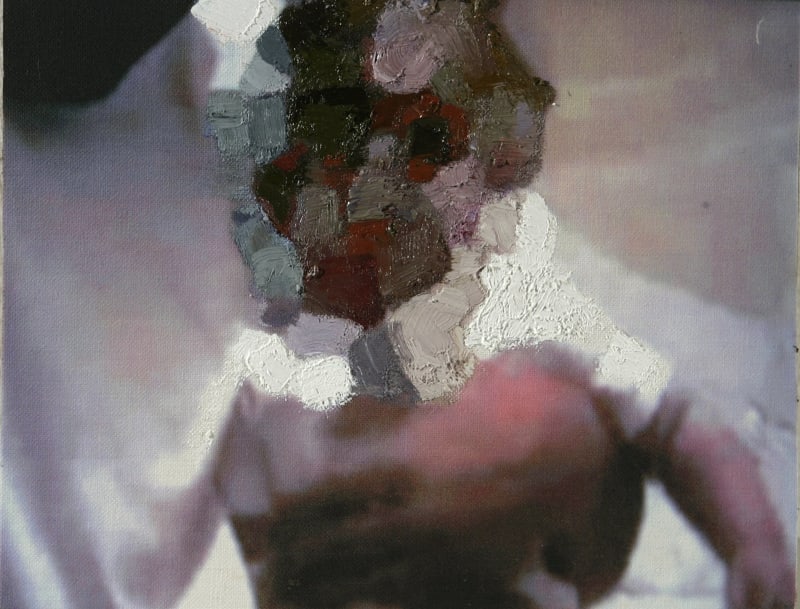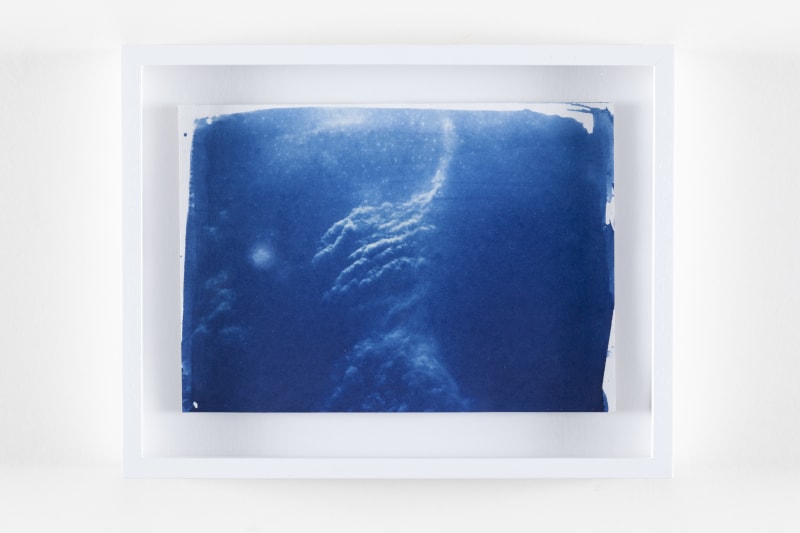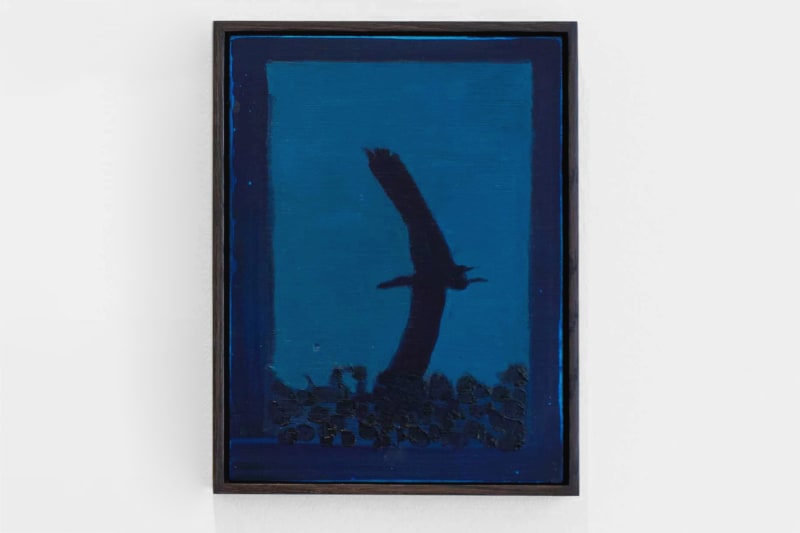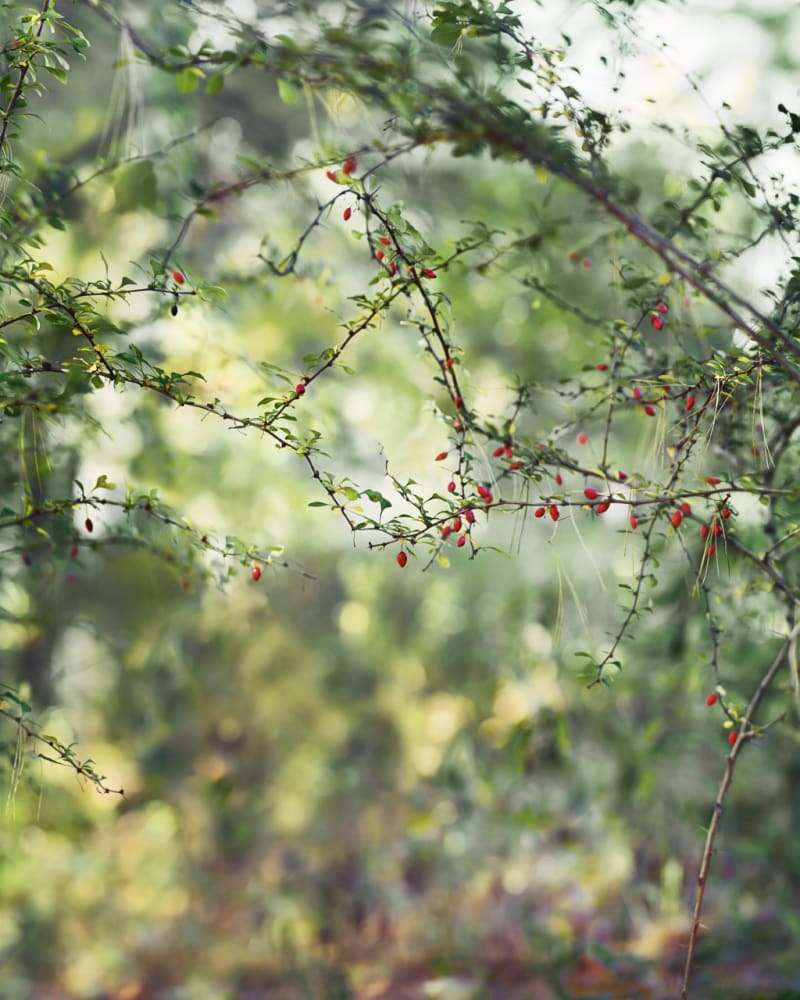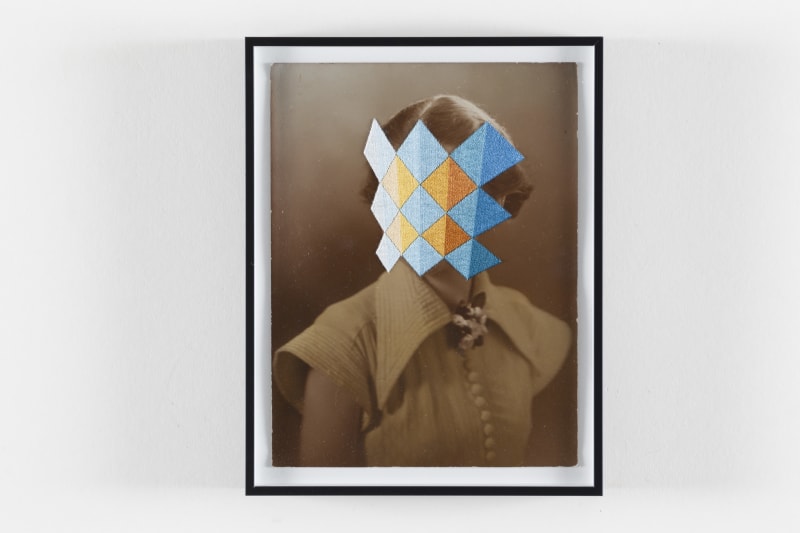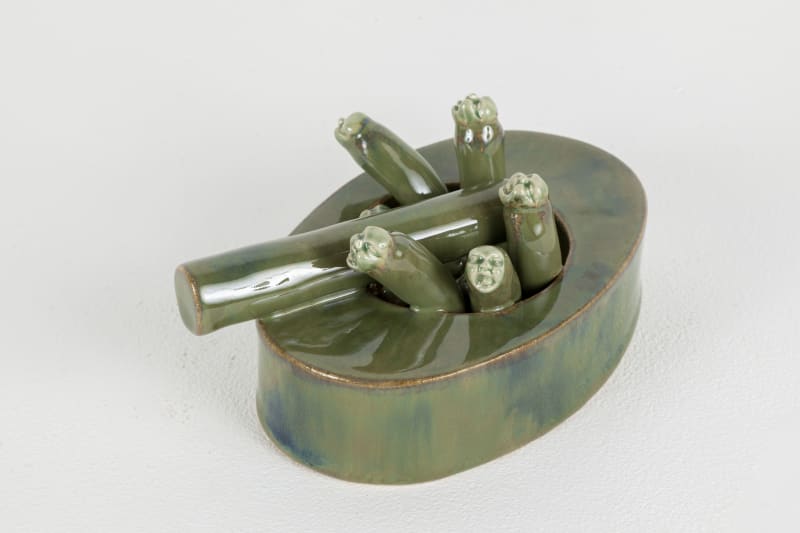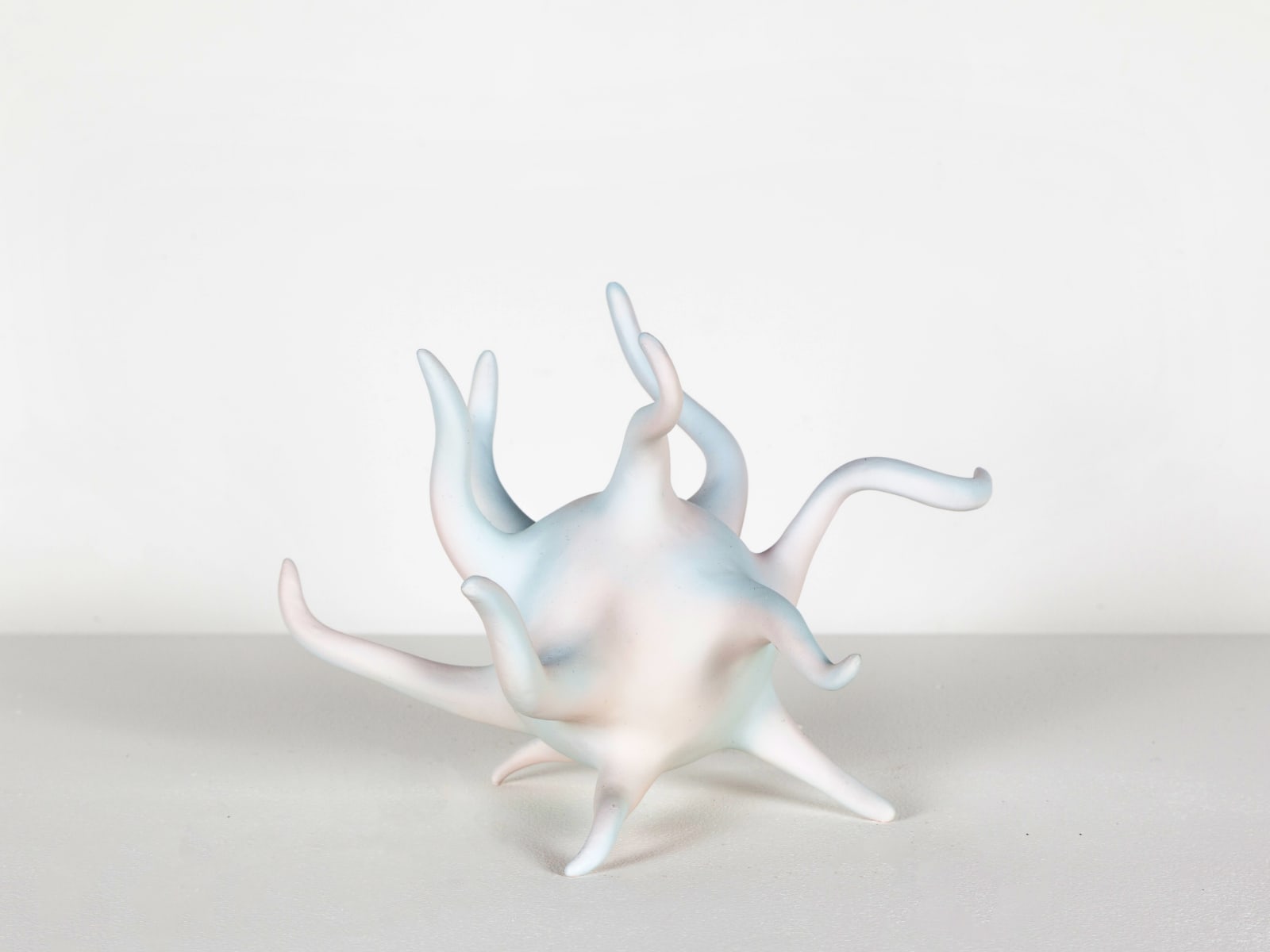
Small is Beautiful
XXXVIII
Overview
Flowers Gallery is pleased to present the 38th edition of the annual Small is Beautiful exhibition, which will take place online.
Small is Beautiful was first established at Flowers Gallery in 1974, inviting selected contemporary artists working in any media to present works with a fixed economy of scale, each piece measuring no more than 7 x 9 inches, offering a rare opportunity to purchase smaller pieces by internationally recognised names and discover new talents.

CHARLOTTE COLBERT (b. 1986)
Language, psychoanalysis, socio-political constructions of gender and identity are all at the heart of Colbert’s practice. Spanning film, photography, ceramics and sculpture, she questions narrative structures and storytelling, weaving surreal and fantastical mise-en-scène in a documentarian approach to characters, figures and people.
The Amulet is a response to all the chaos in March. Inspired by the shapes of white blood cells, I like to think of them as protective charms, warding off bad spirits. The slugs have a big role in my practice and feature quite significantly in my upcoming film. Merging inner and outer, blurring boundaries they connect heaven and earth.
AYUMI MATSUBA (b.1977)
I often begin my painting based on the inspiration I get from nature. Even in the city environment where I live, I see beauty in pieces of nature, such as trees, flowers, water and small animals in parks and sidewalks. Although I start with representational images, from the certain point, I ignore the original picture and paint from my imagination. The process is very fluid and organic. At the end, the painting becomes more about my psyche rather than what I see in nature.
JOHN CARTER (b. 1942)
Taking apparently simple shapes as the starting point and then through playful investigation and rigorous rotation, Carter explores the geometric possibilities of a composition, each resulting work underpinned by a sense of harmony and proportion. Often penetrated by a series of incised holes, slots and lines, but with characeristic flatness, the works are both sculptural and pictorial in effect.

EMMA TURPIN (b. 1964)
I live in London and during Lockdown I longed, like many other people, to be out in a landscape with a huge sky, to run away to the sea, to walk in the woods under the trees. The paintings I have included in Small is Beautiful try to express the joy I felt when eventually I was able to escape the city and to do just that, however fleetingly.


WILLIAM CROZIER (1930-2011)
Intensely vibrant, WIlliam Crozier is characterised by bold symbols, patterns and abstracted planes of colour. He explored the themes of landscape and still life with enduring enthusiasm throughout his life. His depictions of the Mediterranean, Irish and English countryside summon the powerful experience of nature, while his modest tabletop arrangements are rendered with a bold monumentality that extends beyond the domestic proportions of the still life genre.



GERALDINE SWAYNE (b. 1965)
In Woman in a Pink landscape I used an anonymous photograph of a woman at the height of her beauty, melting into the rose-tinted light of a Mediterranean garden. In Son of a musician looking at a flower, I was privileged to be allowed to use a photograph of a friend’s son, in whose face I found that exquisite curiosity and pleasure that only exists as long as childhood does. Often, I paint people with a feeling of wanting to capture them at a perfect moment, like epitaphs. This would certainly be true of these images.
PENNY SLINGER (b. 1947)
British-born American artist and author based in California, Slinger has worked in different mediums, including photography, film and sculpture, her work best described as being in the genre of feminist surrealism. She explores the nature of the self, the feminine and the erotic. Her first solo show was at Flowers Gallery in 1971 and featured assemblages of life-casts of her head and transformed dolls. At the time, art critic Peter Fuller wrote 'Penny Slinger's work is a documentation of the role of one woman in a world still dominated by concepts of male superiority....she emerges as one of the most active and socially relevant artists around.'


SHARON HALL (b. 1954)
Both of these paintings were made in the late summer and they reflect something of the intensity of light and contrast at that time of year. They use a sequence of divisions and parts based on the internal measurements of each painting, top to bottom, edge to edge and side to side. Four Unequal Parts in Greens and Pinks deliberately tackles ‘difficult’ complimentaries and Incisés shifts asymmetrically around an equally divided top edge; both paintings suggest the contrast of light and shadow moving across structures and place.
Sharon was one of Flowers Gallery's 'Artists of the Day' in 1988, selected by Kate Whiteford.

KRISTIAN EVJU (b. 1980)
The diptych Inception II and Inception III are part of the larger project Interventions, which is a series of drawings and paintings investigating ideas of self-representation and the image as avatar. They are drawn with pencil on paper, but rather than being conventionally framed, the paper is mounted onto panels assembled from reclaimed wood, making the drawing and surface a more considered, unified whole.
The two drawings represent a purely visual investigation - using found, photographic source material as factoids - re-represented and carefully rendered in graphite as fiction.
WILLIAM PYE (b. 1938)
The pandemic has provided the perfect opportunity to make an overdue return to clay modelling on a small scale where I can be in direct control of the final outcome. This I had not done since the 1970s. I wish these pieces to express the process by which they have evolved— the bending and stretching, so that they convey both the tension and the flexibility of the material.

SILVIA ROSI (b. 1992)
The work Christine, 2020 is a picture of my grandmother from the family album to which I applied a digital scanning of a cowrie shell. In many cultures cowries are a symbol of fertility and are believed to have healing properties. They are often placed in graves to accompany the dead on their way to a new cycle. In Christine with cowrie, 2020, I created a fake, digital negative to replace the original that is missing. A cowrie shell, sourced during my travels in Togo is applied to the surface of the print.








